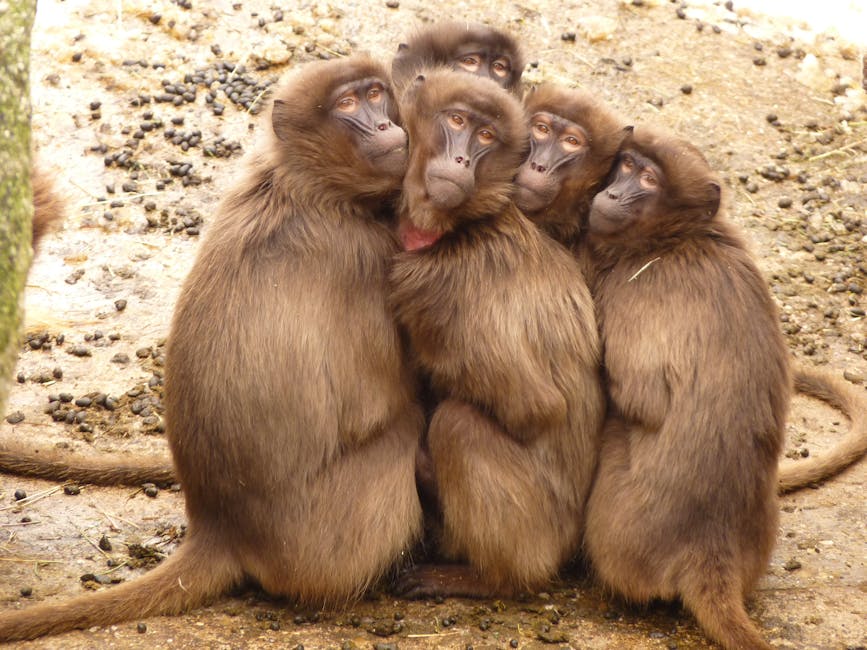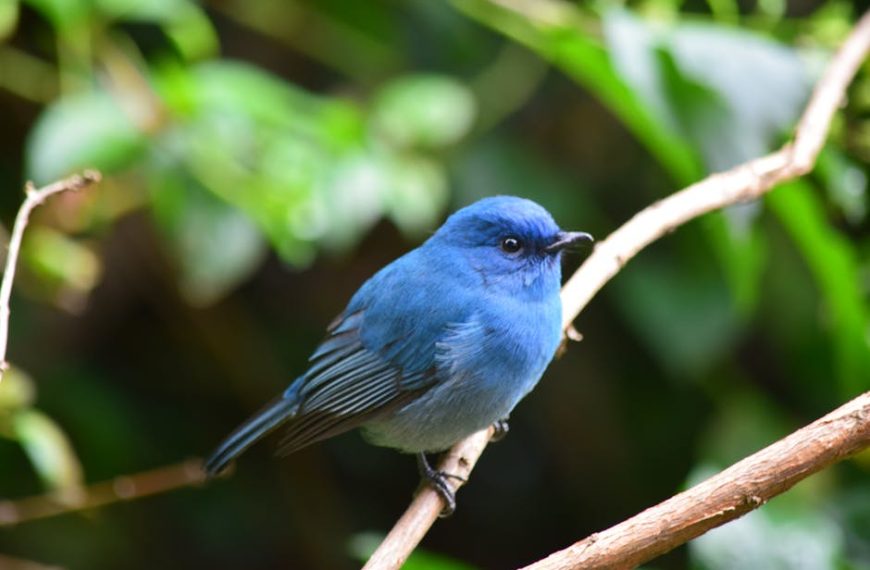While on the surface, mammals and birds may seem incredibly different, these two categories of animals actually have a wealth of similarities. Not only do they share certain aspects in terms of anatomy and behavior, but they also demonstrate comparable patterns of adaptation, diet and even reproduction.
Similarities in Anatomy
You might be surprised to know that both mammals and birds boast a number of identical structural features. Similar to us humans, birds also possess a complexly organized brain, a four-chambered heart, and a highly efficient respiratory system featuring lungs. These key similarities in body structures underline the incredible unity of life all living beings share.
Moreover, fostering an understanding of these similarities in anatomy is helpful in observing and classifying different animals in wildlife. Here are some key points to remember:
- Birds and mammals both have lensed eyes and advanced auditory systems.
- They share similar skeletal and muscular systems.
- Both possess endothermic metabolisms.
Thus, it proves crucial to value these similarities when embarking on nature trails or birdwatching trips. It allows a more comprehensive view of the diverse living beings that surround us.
Commonalities in Behavioral Patterns
Have you ever noticed how closely some bird species’ social behaviors align with those of mammals? It’s true – just like mammals, many bird species also demonstrate socially complex behaviors including play, cooperation, and even grief. From mating dances to intricate nest-building affairs and migration patterns, a wealth of commonalities underscores the behavioral patterns of these distinct classes of animals.
Here are some pro tips to help in identifying shared behaviors:
- Look for coordinated activities in groups – both birds and many mammals are often highly social creatures, whose survival depends on communal cooperation.
- Pay attention to vocalizations – both birds and mammals use sound as a mode of communication, whether it’s to attract a mate, ward off a predator or secure a territory.
- Notice patterns of rearing – both birds and mammals display some form of parenting, a trait not as common in other categories of animals.
Adaptation Similarities in Mammals and Birds
If there’s one thing we’ve learned from nature documentaries, it’s the impressive adaptability of the animal kingdom. Mammals and birds are no exception to this rule. From the hibernating bears of the polar regions to the migrating birds that traverse the globe annually, these animals have developed a series of evolutionary tricks to tide over the most testing of conditions.
The process of adaptation, from colorful markings for camouflage or the development of tools for shelter and food, is a fascinating study in both mammals and birds. Here are a few noteworthy examples:
- Birds and mammals demonstrate diversity in size and shape, enabling them to capitalize on the resources available in their environment.
- Warm-bloodedness in both classes allows them to withstand extremes of temperature by maintaining stable internal conditions.
- Protective mechanisms such as camouflage or mimicry are employed by both mammals and birds.
Indeed, a walk in the wild reveals a vibrant and dynamic world where each creature, be it mammal or bird, displays tricks of survival uniquely its own.
Shared Characteristics in Diet
You are what you eat, goes the old adage, and in the case of birds and mammals, this sentiment holds true. From tiny hummingbirds sipping nectar to mighty lions tearing into their prey, the dietary habits of these creatures exhibit striking parallels. Both mammals and birds encompass carnivorous, herbivorous, and omnivorous species, reflecting a stunning complexity in their eating patterns and food acquisition strategies.
Here are a few pro tips to understand dietary patterns:
- Closely observe the shape and size of an animal’s beak or teeth- they often serve as a clue to its diet.
- Identify feeding routines and locations; these offer key insights into animals’ dietary habits.
- Notice scavenger behavior – Many birds and mammals are opportunistic feeders, eating whatever is available at the time.
| Feature | Mammals | Birds |
|---|---|---|
| Diet types | Carnivores, Herbivores, Omnivores | Carnivores, Herbivores, Omnivores |
| Hunting Methods | Varied – ambush, stalking, running down prey | Varied – swooping, stalking, ground hunting |
| Eating Habits | Meals at specific time, dependent on food availability | Frequent eating, dependent on migration and breeding patterns |
Understanding these dietary patterns forms an essential part of our broader understanding of how these species coexist, compete, and adjust in dynamic environments.
Similarities in Reproduction
The miracle of birth and the joy of parenting are universal aspects shared by mammals and birds. Although the specific details vary, the fundamental principles remain the same. From courtship displays to intricate nesting, the roles of motherhood and the process of incubation, these species display a fascinating array of reproductive practices and parental behaviors.
While most birds lay eggs, a few exceptional species like the brown kiwi and the emperor penguin mimic mammalian birth patterns to some extent: they incubate their lone egg using body heat just as mammals would nurture their offspring in the womb.
Mammals, on the other hand, give birth to live babies and exhibit extended periods of care, protection, and tutoring, similar to some bird species.
Here are a few checklists when observing reproductive behaviour:
- Notice courtship behaviors- from intricate dances to vocal performances, both birds and mammals go to great lengths to attract a mate.
- Look out for nests: both mammals and birds choose, prepare, and protect their nests meticulously.
- Spot parental behavior: from food delivery to the training of young ones in survival tactics.
In conclusion, comparing and understanding the multitude of similarities between mammals and birds can be a source of endless fascination. It allows us to appreciate the stunning diversity, complexity and unity present in our natural world. So next time you go exploring nature, remember to look out for these surprising similarities!
Key Takeaway:
- Mammals and birds, though different in many aspects, have numerous similarities in terms of anatomy, behavior, adaptation, diet, and reproduction.
- Both groups share similar anatomical features like a complex brain, a four-chambered heart, a highly efficient respiratory system, lensed eyes, and advanced auditory systems.
- They exhibit common behavioral traits, including social cooperation, sound communication, similar parenting patterns, and mating behaviors.
- Mammals and birds both have evolved to adapt to various environments, displaying similar survival strategies, including hibernation and migration.
- Both groups include carnivorous, herbivorous, and omnivorous species, with some birds and mammals using similar hunting strategies.
- Despite their unique methods, mammals and birds share a common reproduction process, with some bird species even exhibiting a phenomenon of live birth akin to mammals.
The interconnectedness and similarities between mammals and birds are incredible testimony to the unity of life. So next time you are out exploring nature, take the time to observe these fascinating commonalities and appreciate the depth of diversity in our natural world.
FAQs
Q: Are there specific bird species that closely resemble mammals in certain behaviors?
A: Yes, there are bird species that share some behaviors with mammals. For instance, crows and ravens are known for their intelligence and ability to use tools, much like primates. Penguins also share parenting roles between males and females, similar to some mammalian species.
Q: Do birds and mammals share any genetic similarities due to these common traits?
A: While birds and mammals have evolved independently, they share a common distant ancestor. This ancestral connection and the pressures of natural selection have led to certain genetic and physiological similarities between them.
Q: How do dietary habits affect the evolution of birds and mammals?
A: Dietary habits can indeed influence evolution. Every creature is adapted to maximize its survival in its given environment, and this includes aspects like food acquisition and consumption. These traits can influence an animal’s morphology and behavior over generations.
Q: Are the parenting patterns of birds and mammals identical?
A: While not identical, there are striking similarities. For example, both birds and mammals usually pair up for mating and both parents often contribute to the care and protection of the offspring in various ways.
Q: Can hibernation be seen in both mammals and birds?
A: Yes, certain species in both groups employ hibernation or similar states of dormancy as a survival strategy, especially during periods of extreme cold or food scarcity.
Your exploration and learning of the natural world do not need to stop here. Share this article with fellow nature enthusiasts or explore more posts on our website to satisfy your curiosity about our fantastic planet.












